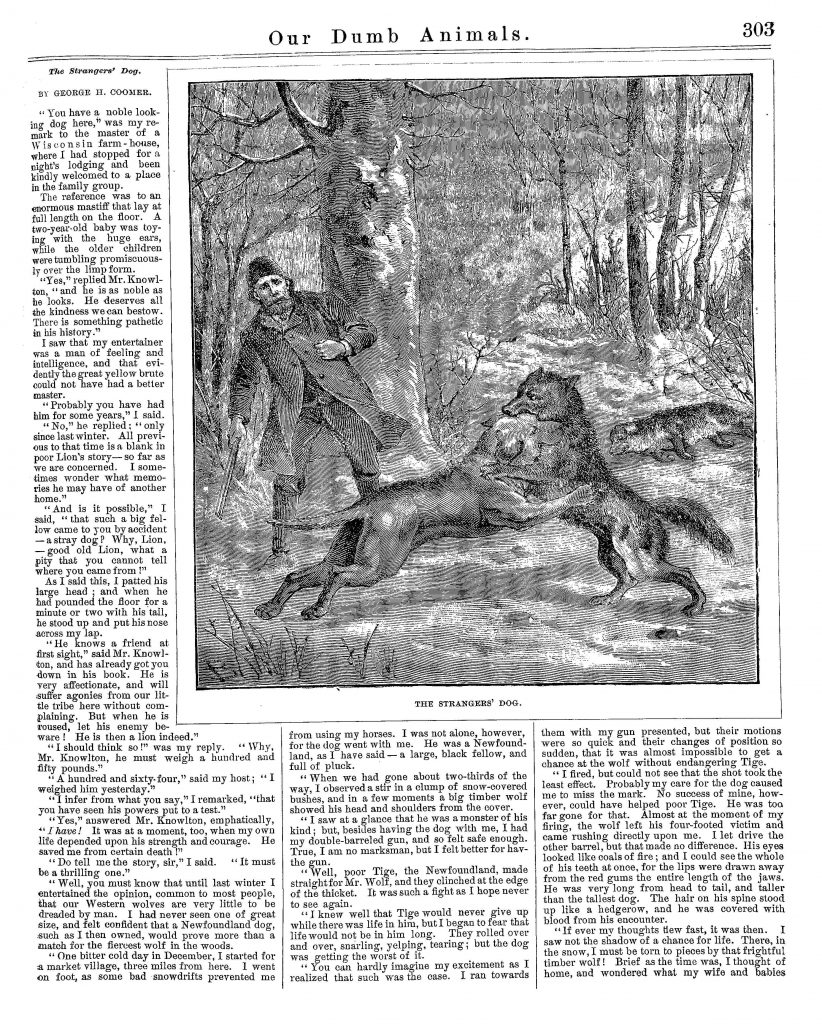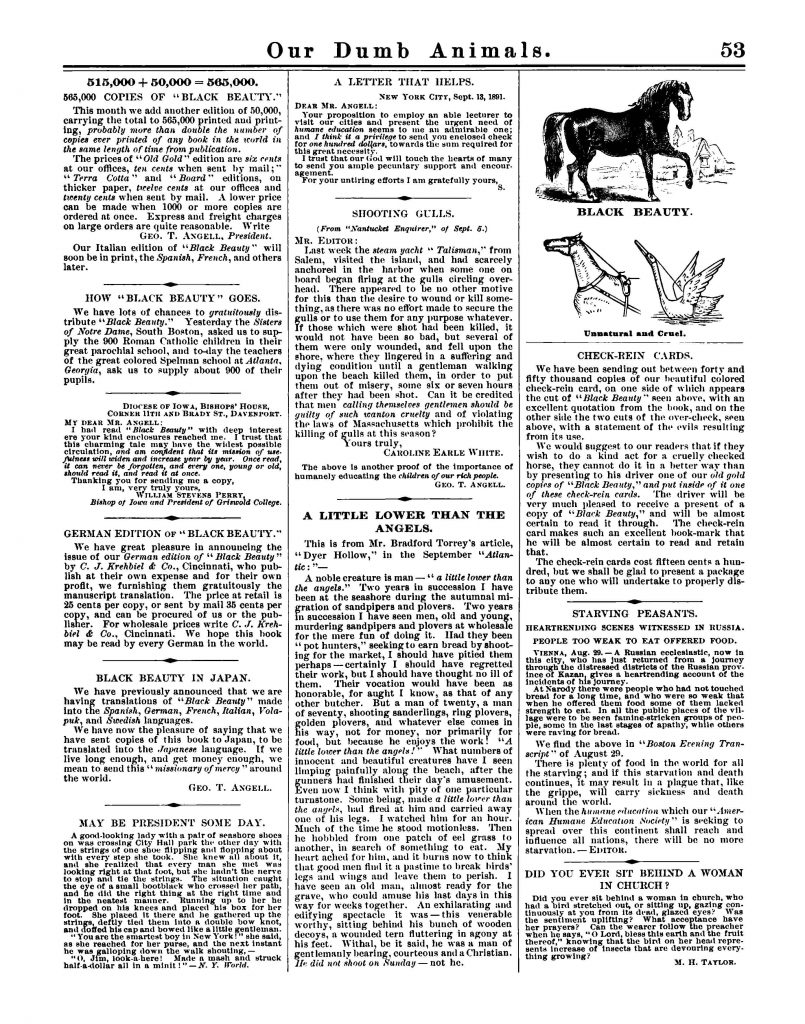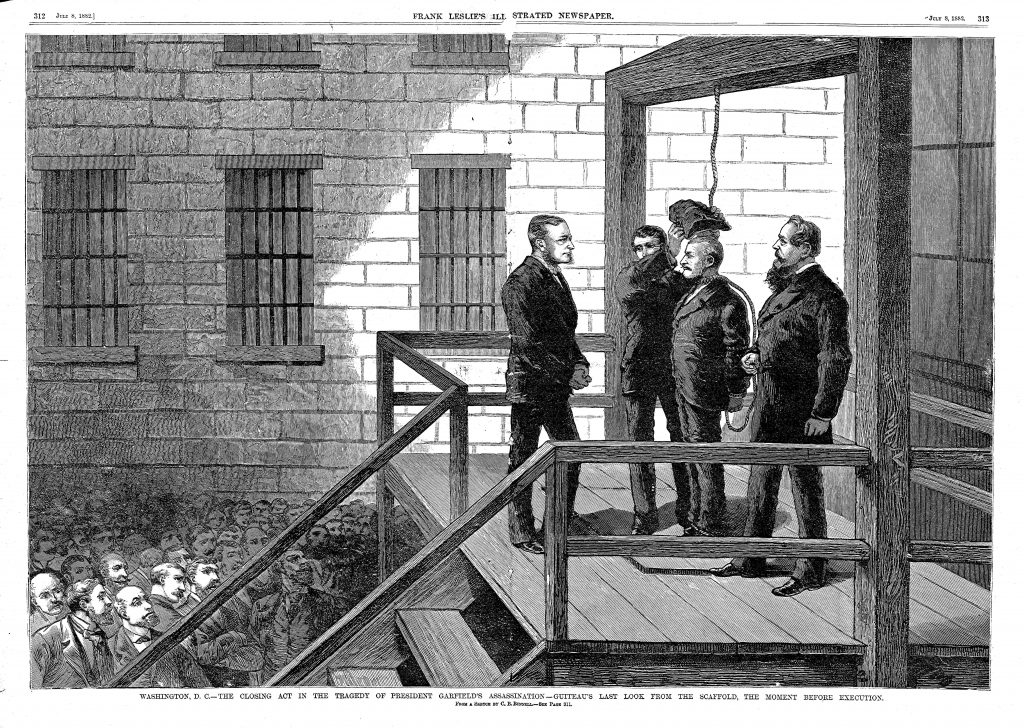At Hein we know our users go for the heavy hitters, the tried and trues of legal research: your session laws, your CFRs, your congressional documents. Sprinkle in a hearty dose of journal articles and you’ve got yourself an excellent greatest hits album of research needs.
But HeinOnline contains so much more within its nearly 188 million pages. Back when this blogger first began working at the Hein company, her job was to prepare content for digitization. Over the years, some eclectic, cool, and even weird books crossed this blogger’s desk. Join us for a little tour through the following databases to spend some time with titles you may have overlooked.
- Animal Studies: Law, Welfare and Rights
- History of Capital Punishment
- Religion and the Law
- World Trials Library
A Hidden Secret
Digitization allows the library to come to you, letting a researcher have access to content that might otherwise be out of reach. At Hein, we work with libraries all over the United States borrowing books from their stacks for digitization, putting the catalog right in your web browser.
But there are necessary sacrifices that come with accessibility and portability. From the clean PDF on the screen, it is impossible to feel how dusty and dry these old leather-bound books have become with the passage of time. You cannot hear their spines creak or feel the ragged edges of pages cut open by legal researchers from centuries gone by (and occasionally the pages they left unread and still joined together, which poses digitization challenges for a different post).
When this book arrived at HeinOnline headquarters in 2016 from the Moritz Law Library at the Ohio State University, its red boards, gilded page edges, and distinctly 19th century wordy title betrayed no clue to the secret hidden on its pages. Click below for a video this bewildered but delighted blogger took when she realized what she had sitting on her desk.
This is called a fore-edge painting. Nearly invisible thanks to the gilding on the page edges, the painting is only visible when the pages are fanned. The painting found on On the Nature, Power, Deceit, and Prevalence of Indwelling Sin in Believers is a single fore-edge painting, that is, a painting on one side of the page edges. Rarely, a double fore-edge painting will reveal one painting when the pages are fanned towards the reader, and a different painting when fanned away from the reader. Fore-edge paintings date back to the 17th century but became extremely popular in the 19th and 20th centuries; the fore-edge painting from Ohio State, for example, is on a book published in 1825.
All Creatures Great and Small
The development of HeinOnline’s Animal Studies: Law, Welfare and Rights collection brought in books of a different genus than this blogger was used to seeing on her desk. The digitization of one title, the simply named Animals, was a large undertaking in terms of the amount of volumes scanned (135!), the number of issues per volume (12!), and the size of their pages. It may be hard to tell from the digital images, but the early issues were newspaper-sized.
Originally titled Our Dumb Animals (dumb as in mute, not unintelligent), Animals was published by the Massachusetts Society for the Prevention of Cruelty to Animals. Founded in 1868, the same year the first issue of Animals was published, the Massachusetts Society for the Prevention of Cruelty to Animals is the second-oldest humane society in the United States. Early iterations of its newsletter printed business relating to the Society, but also featured stories of animals’ heroism, such as that of the stray dog who came to a stranger’s aid one dark and snowy night in a Wisconsin forest.

In the 1890s, the Society’s newsletter began to prominently feature advertisements and illustrations relating to Black Beauty, the famous novel about the inhumane treatment of working horses. Black Beauty is one of the best-selling novels of all time and was an instant success upon its publication in 1877. In 1890, the American Humane Society published the first official edition of the novel in the United States, where it was championed by the Massachusetts Society for the Prevention of Cruelty to Animals, which sold and distributed copies of the novel for free to teachers and schoolchildren. Cruel practices decried in the novel, such as tail docking and the improper use of the bearing rein, or checkrein, which jerked a horse’s head upwards in an unnatural angle, were highlighted in the Society’s newsletter as well as its efforts to educate horse owners on proper care of their animals.

Crimes and Criminals
Love a good true crime story? Have you binge listened all of Serial, Casefile, and Dirty John? Does Netflix know to email you every time they add a tv show about an unsolved murder? If so, there are a few things in HeinOnline worth checking out that you may have overlooked.
See You in Court
Historical trials offer a fascinating glimpse into legal proceedings of the past. These volumes often arrive with parchment pages so worn by time that they feel almost soft and supple in a way modern paper (and the paper cuts they deal out) never does, with ink heavily pressed into the pages.
But these trials often hold gruesome tales. Here’s a spoiler alert: it was common practice in the 17th and 18th centuries to publish the outcome of a trial and the punishment administered on a defendant in a separate paragraph at the very end of the book. Edward Coleman, a courtier of Charles II, was found guilty of treason in 1678 as part of the fabricated Popish Plot, a fictitious Catholic conspiracy to assassinate the king. Coleman, having been found guilty of high treason, was subjected to the most extreme punishment in England.

Gruesome, right? Hanging, drawing, and quartering was the statutory penalty for men convicted of high treason in England until 1870; the sentence was still being imposed into the 19th century but with the penalty modified slightly in its execution, instead hanging the condemned and beheading him posthumously, while omitting quartering his remains entirely. The death penalty for treason in England was finally abolished in 1998.
Turning away from the horrifying towards the strange, we come to the case of Elizabeth Canning, on whom HeinOnline offers several accounts of her sensational trial. Unfamiliar with the name? Canning’s case has all the ingredients for a #1 podcast: missing persons, kidnapping, wrongful convictions, and a mystery that is still unsolved today.
Elizabeth Canning was a maidservant who suddenly disappeared on January 1, 1753 before reappearing on her mother’s doorstep a month later, disheveled and bleeding. Canning later claimed that she had been attacked by two unknown men and then held against her will by Mary Squires and Susannah Wells, who had tried to coerce her into prostitution. Canning eventually escaped her captors by uncovering a boarded up window in the room where she was being held and fleeing for her life.
Immediately the case gripped the public’s fervent attention, with Canning’s supporters, known as Canningites, publishing a best-selling pamphlet to raise money for her legal expenses. But aside from Canning’s own testimony, corroborating evidence of her account was slim. Still, Squires and Wells were tried and convicted, with Squires being sentenced to death for the theft of Canning’s stays, or corset.
A subsequent investigation by the trial judge found that evidence of Squires’ innocence had been suppressed at trial, with other witnesses for the prosecution later recanting their testimony. In a stunning turn, Canning was arrested, tried, and found guilty of perjury.
Canning’s guilty verdict, however, did little to dampen her public support and Canning continued to maintain that she had been kidnapped. She was sentenced to seven years of transportation and lived out the remainder of her life in Connecticut. Today, whatever happened to Canning that January in 1753 remains a mystery, with writers and historians still debating the facts of the case.
Portraits of Criminals
Lastly, let us turn to some odd ephemera that can be found in Eugene G. and Marilyn M. Wanger’s Death Penalty Collection, a subcollection of History of Capital Punishment. A comprehensive overview of death penalty legislation, Wanger’s collection offers researchers some unexpected visual supplements to their criminal justice research.
One of my personal favorites in the bibliography are the hundreds of wanted posters from the FBI and U.S. Postal Service.

Other famous images from history can be found here, including the front page of The Detroit News covering the execution of Bruno Richard Hauptman for the abduction and murder of Charles Lindbergh, Jr., the “Crime of the Century.”
But in the days before modern photography, wood engraved illustrated papers were the main means for media outlets to bring the news to life for their readers. Frank Leslie’s Illustrated Newspaper was a literary and news magazine that was published from 1855 to 1922. A pioneer for its time, Leslie’s strove to present its readers with newsworthy events within days of their happening, including presidential assassinations: the first, the execution of Mary Surratt, Lewis Powell, David Herold, and George Atzerodt for conspiring in the assassination of President Lincoln; the second, the execution of Charles Guiteau, assassin of President Garfield.

Want More?
Get the most out of a HeinOnline subscription by subscribing to the HeinOnline Blog for more posts exploring everything Hein has to offer, from content alerts to tips and tricks and posts on how to research anything under the digitized sun.



